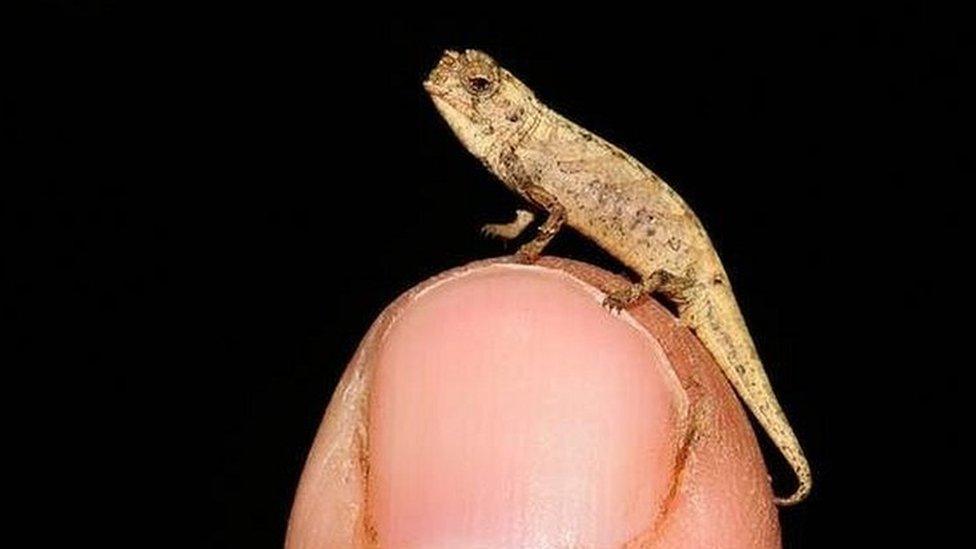WWF: Nature charity discovers more than 200 new species in South East Asia
- Published
- comments
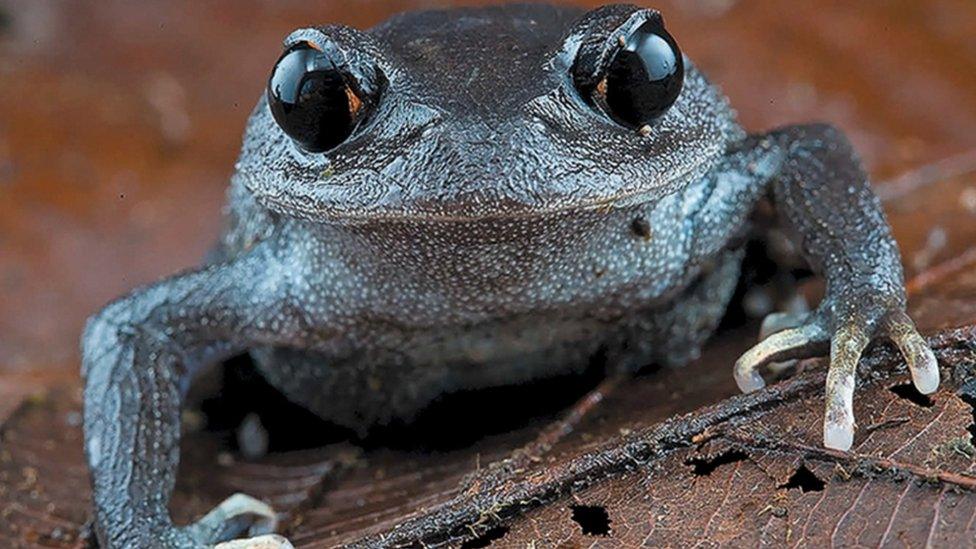
A big-headed frog has been discovered in Vietnam and Cambodia
More than 200 new species have been discovered in the Greater Mekong area in South East Asia.
A langur monkey, a big headed frog and a half orange, half grey gecko are among those newly found.
Nature charity WWF has reported that these unusual finds show that the area in South East Asia is a "hotspot" for wildlife diversity.
But the charity also said it showed the threats they face and the need to protect species and habitats from being lost.

This rock gecko is orange and grey to help it camouflage with its environment
In total 155 plants, 16 fish species, 17 amphibians, 35 reptiles and one mammal were described as new species.
These were found in the Greater Mekong which is an area that covers Cambodia, Laos, Burma, Thailand and Vietnam.
More than 3,000 new species in the past 24 years have been discovered in the Greater Mekong area, showing it's a great place for new discoveries.
But Dr Yoganand Kandasamy, regional wildlife lead at WWF-Greater Mekong also says the species "require our greatest respect, utmost attention and urgent actions to protect their habitats and minimise exploitation."
These species are extraordinary, beautiful products of millions of years of evolution, but are under intense threat, with many species going extinct even before they are described.
What species were discovered?
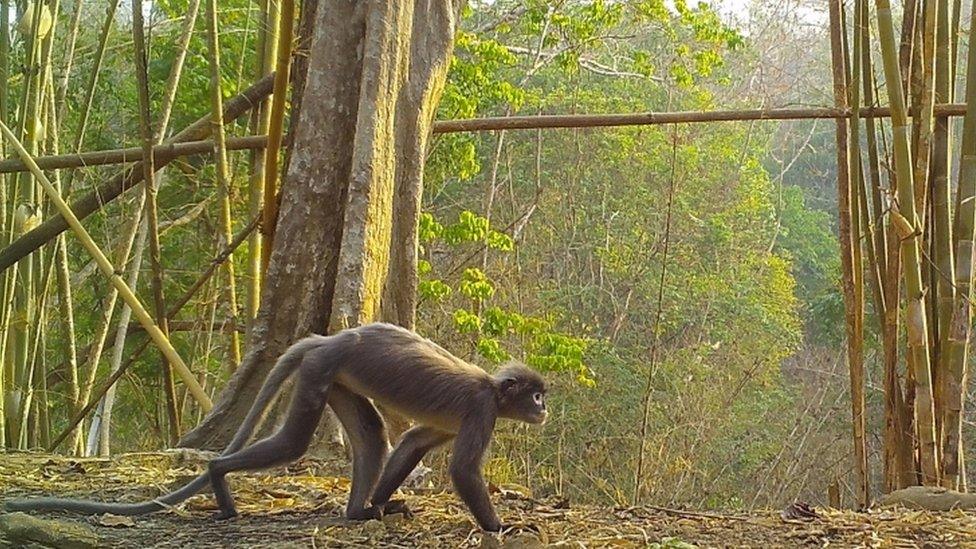
A langur monkey is among the 224 new species found by charity WWF
A langur monkey was one of the new species found. It is likely to be listed as critically endangered because it's thought only 200 -250 langurs are living in the wild. They are under threat from hunting, habitat loss and agriculture.
Another newly found animal is an orange and brown newt with a stripe down its back.
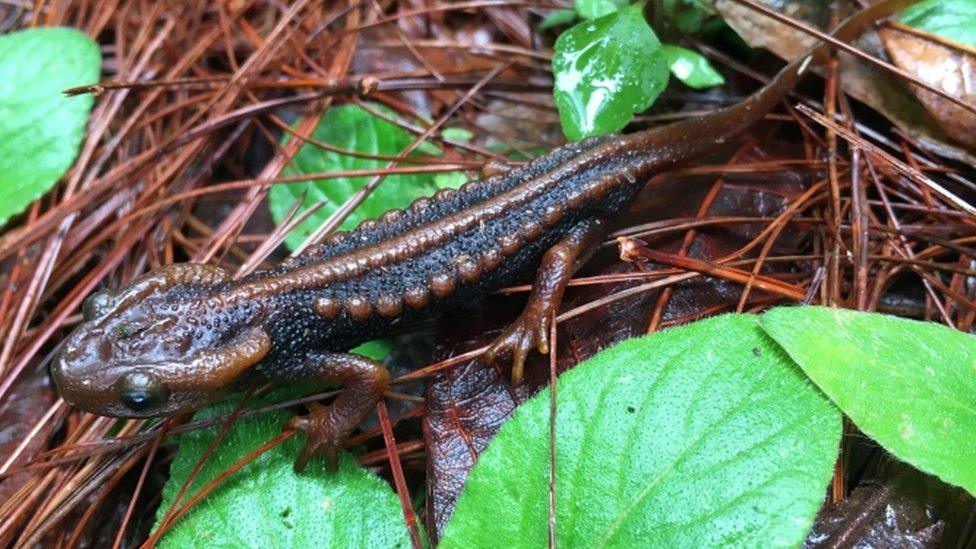
This newt has been discovered in Thailand
This newt was first spotted in a 20-year-old photograph in a magazine, which made researchers investigate if the species still existed.
A rock gecko, found in Thailand, has also been identified. It is orange on the front half of its body and grey from the middle of its back to its tail, which helps it to camouflage against moss.
- Published13 August 2021
- Published12 August 2020
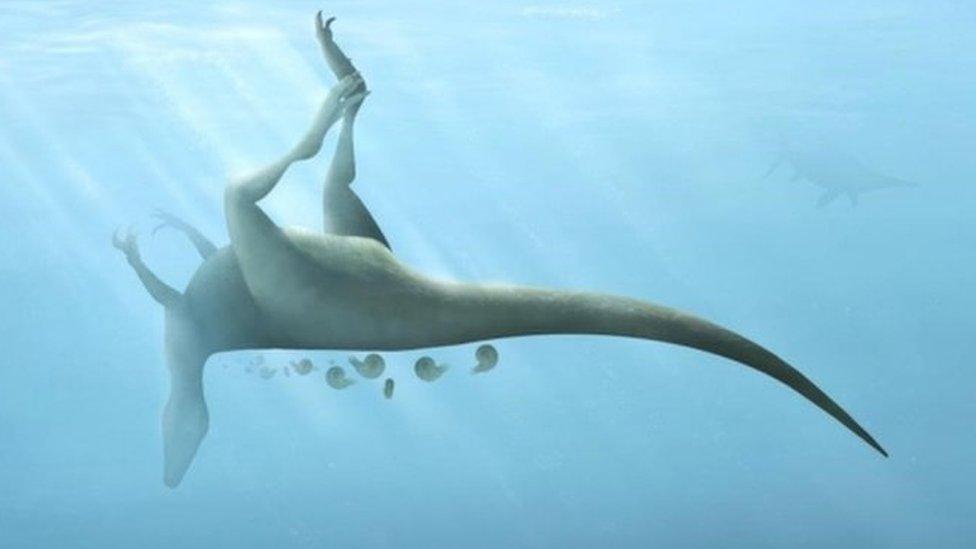
- Published3 February 2021
